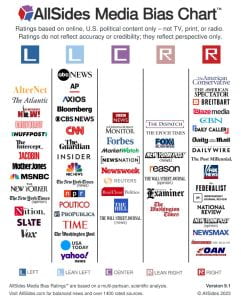When asked what he’s hoping to gain from an impeachment inquiry, Representative Troy Nehls (R-TX) answered: “All I can say is Donald J. Trump 2024, baby.”
The stunning lack of evidence for the Republican Party to inquire into President Biden’s corruption recalls an almost comical political period of the 1850’s, the rise and fall of the “Know Nothing Party.” This nickname for a party known officially as the “Native American Party” derived from a policy of its members to say, “I know nothing,” when pressed for details about the Party.
The Party was especially wary of the influence of Catholics on American politics, and it warned specifically against Irish and German immigrants as dangerous intruders on the native Americans, i.e. those white Protestants born in the United States. The irony of an anti-immigrant party calling itself “Native American” is transparent today, as we realize the only real case against immigrants could be mounted by Native Americans, as we now call those native to this country before white settlers moved in.
The Know Nothings rose to insignificance around 1856, when they nominated Millard Fillmore as their Presidential candidate.
The American Party nominated former President Millard Fillmore in the 1856 presidential election, but he kept quiet about his membership in it, and he personally refrained from supporting the Know Nothing movement’s activities and ideology. Fillmore received 21.5% of the popular vote in the 1856 presidential election, finishing behind the Democratic and Republican nominees.[6]
That one of our most inconsequential Presidents should back away from the Know Nothings’ endorsement tells you all you need to know about the influence of this political movement. However their rise and fall is a cautionary tale about anti-immigration as a policy for candidates for higher office. The anti-Catholic concern about foreign influence in this country finally died down with the election of John Kennedy in 1960, but it was a dangerous undercurrent in American politics for years following the collapse of the “No Nothings” a century earlier.
In 1860 as in 1960 the concern for Catholic influence in politics was the potential of the Pope to dictate policy from the Vatican to his bishops in the United States.
One Boston minister described Catholicism as “the ally of tyranny, the opponent of material prosperity, the foe of thrift, the enemy of the railroad, the caucus, and the school”.[16][17] These fears encouraged conspiracy theories regarding papal intentions of subjugating the United States through a continuing influx of Catholics controlled by Irish bishops obedient to and personally selected by the Pope.
Since President Kennedy became one of our revered martyrs for democracy, the issue of Catholic influence over American politics has lost its potency, but the anti-immigration sentiment lives on in the rise of Donald Trump. The former President tapped into the latent fears of the citizens with toxic language like
When Mexico sends its people, they’re not sending their best. They’re not sending you. They’re not sending you. They’re sending people that have lots of problems, and they’re bringing those problems with us. They’re bringing drugs. They’re bringing crime. They’re rapists. And some, I assume, are good people. https://www.washingtonpost.com/politics/2019/10/02/trumps-most-insulting-violent-language-is-often-reserved-immigrants/
But as Congress adjourned for the holidays, the pressing issue was the evidence that grounded the investigation by the House Oversight Committee into the crimes and misdemeanors needed for the impeachment of a President. There wasn’t any that the Republicans could articulate when cross-examined by Democrats. They argued that the inquiry was designed to uncover the evidence, but the judicial principle is that there would be enough evidence to proceed with the case, which is what a warrant requires.
It was comical to witness the feeble defense of the impeachment inquiry. The defensive language harkened back to that aberrant period in American politics when a political movement was based on the infamous words, “I know nothing.”



